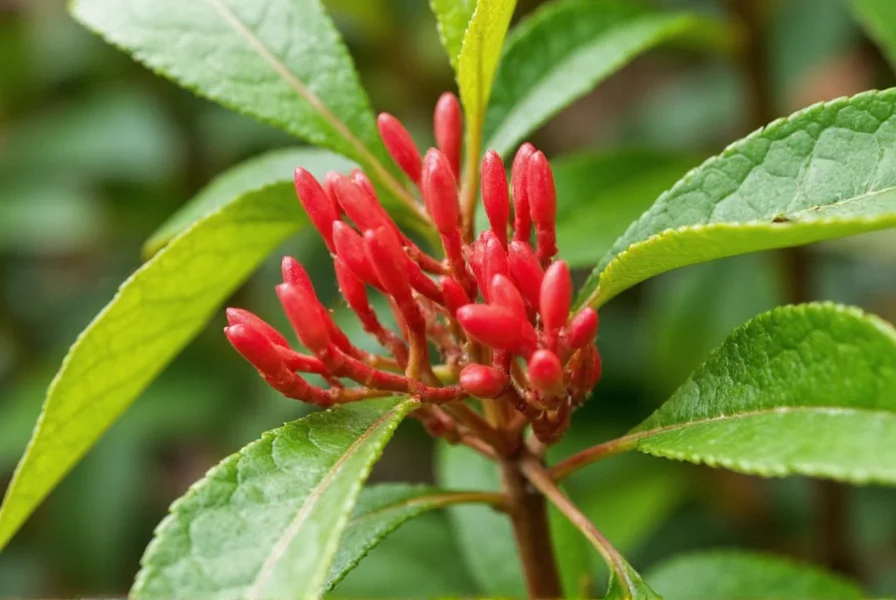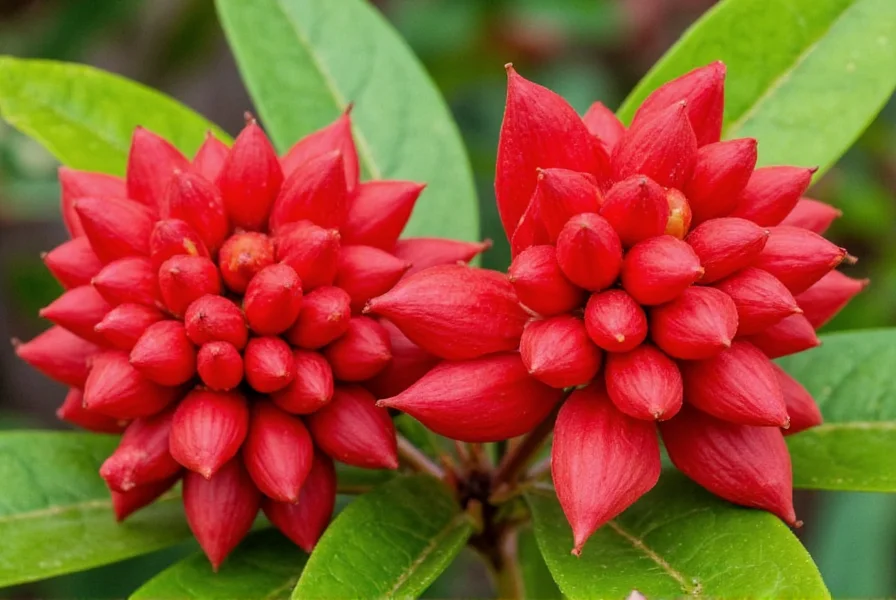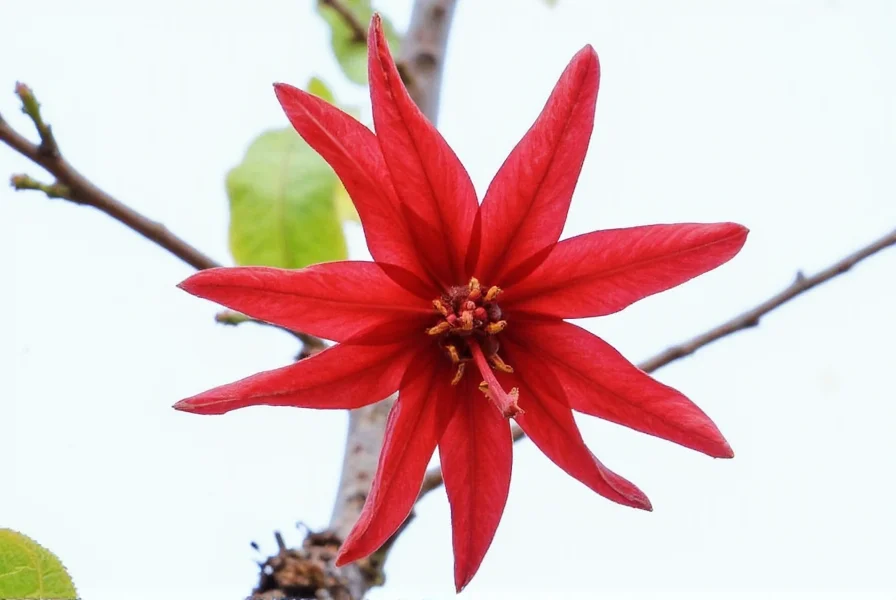Illicium is a genus of approximately 40 species of flowering plants in the family Schisandraceae, primarily known for Illicium verum (star anise), the source of the culinary spice with distinctive star-shaped fruit pods. While some species are edible and widely used in cooking and traditional medicine, others like Illicium anisatum (Japanese star anise) contain toxic compounds that can cause severe neurological effects.
Understanding the illicium genus botanical classification is essential for both culinary enthusiasts and botanists. These evergreen trees and shrubs predominantly grow in subtropical and tropical regions of Southeast Asia, North America, and the Caribbean. The genus name comes from the Latin word "illicere," meaning "to entice," referring to the aromatic properties of many species.
Taxonomy and Evolutionary Background
Illicium belongs to the ancient family Schisandraceae, which diverged early in the evolution of flowering plants. Unlike many modern angiosperms, illicium species retain primitive characteristics such as spiral flower arrangements and undifferentiated tepals. The genus spans two major geographical regions:
| Region | Key Species | Distinguishing Features |
|---|---|---|
| Asia | Illicium verum, I. anisatum | Higher number of carpels (8-13), more intense aroma |
| Americas | I. floridanum, I. parviflorum | Fewer carpels (7-11), milder fragrance, often toxic |
This geographical separation has led to significant differences in chemical composition, particularly regarding the presence of shikimic acid (valuable for pharmaceuticals) versus toxic safrole compounds.
Key Species and Their Characteristics
When exploring illicium verum characteristics, several features distinguish the edible star anise from its toxic relatives:

Illicium verum (Chinese Star Anise)
The commercially valuable species features 8-13 pointed star-shaped fruits with a sweet, licorice-like aroma due to trans-anethole. Each carpel contains a single shiny brown seed. This species is cultivated extensively in China, Vietnam, and India for culinary and medicinal applications. The culinary uses of illicium plants primarily center on this species, which is safe for consumption when properly processed.
Illicium anisatum (Japanese Star Anise)
Often confused with I. verum, this toxic species contains potent neurotoxins including sikimitoxin. Its fruits typically have 10-12 points with more curved, sharper tips compared to Chinese star anise. The aroma is less sweet and more pungent. Safety considerations for illicium species are critical, as accidental substitution can cause severe vomiting, seizures, and even death.
American Illicium Species
Species like Illicium floridanum (yellow anise) and Illicium parviflorum (small-anise) are native to southeastern United States. These plants produce flowers with distinctive yellow or cream colors but contain toxic compounds that make them unsuitable for consumption. The illicium floridanum growing conditions include moist, acidic soils in partial shade, often in swampy areas.
Botanical Identification Guide
Accurate identification is crucial when working with illicium genus plants. Key distinguishing features include:
- Leaf arrangement: Alternate, simple leaves with entire margins
- Flower structure: Radially symmetrical with numerous tepals arranged in spirals
- Fruit morphology: Star-shaped aggregate fruits composed of individual carpels
- Aroma profile: Edible species have sweet anise scent; toxic varieties often have more medicinal or unpleasant odors
Microscopic examination reveals additional differences in oil cell distribution and crystal structures that help experts distinguish between species. For amateur identification, the number of points on the fruit (typically 8 for I. verum) and the curvature of the points provide the most accessible distinguishing features.
Practical Applications and Safety
The difference between star anise and japanese star anise has significant practical implications. Authentic Chinese star anise (I. verum) is widely used in:
- Culinary applications: Spice blends, baked goods, and flavoring for liquors
- Traditional medicine: Treatment of digestive issues and respiratory conditions
- Pharmaceutical production: Source of shikimic acid for antiviral medications
However, cases of toxic illicium species identification errors have led to poisoning incidents, particularly when unregulated markets sell Japanese star anise as the edible variety. Symptoms of poisoning include:
- Neurological effects: Seizures, hallucinations, and dizziness
- Gastrointestinal distress: Nausea, vomiting, and abdominal pain
- Cardiovascular symptoms: Irregular heartbeat and hypertension
Purchase star anise only from reputable sources that can verify the botanical origin. Whole pods are safer than ground spice for identification purposes.
Cultivation Practices
For those interested in growing illicium plants, understanding illicium growing requirements is essential. These plants generally prefer:
- USDA hardiness zones 7-10 (depending on species)
- Well-drained, acidic soil with high organic matter
- Partial shade to full sun exposure
- Consistent moisture without waterlogging

Propagation is typically through seed or semi-hardwood cuttings. Plants grown from seed may take 6-8 years to produce flowers and fruit. Commercial growers often use grafting techniques to accelerate production. When cultivating edible varieties, strict quality control measures prevent cross-contamination with toxic species.
Scientific Research and Future Applications
Recent studies on illicium medicinal properties have revealed promising applications beyond traditional uses. Researchers are investigating:
- Antimicrobial properties against drug-resistant bacteria
- Potential anti-cancer compounds in certain species
- Neuroprotective effects of specific phytochemicals
- Sustainable agricultural practices for commercial cultivation
However, researchers emphasize the importance of precise species identification in all studies, as chemical compositions vary dramatically between different illicium species. The illicium genus research developments continue to expand our understanding of this complex plant group.
What's the primary difference between edible and toxic illicium species?
The key difference lies in their chemical composition. Edible Illicium verum contains trans-anethole, which gives it the characteristic sweet anise flavor. Toxic species like Illicium anisatum contain potent neurotoxins including jasminine and sikimitoxin. Visually, edible star anise typically has 8 relatively straight points, while toxic varieties often have 10-12 more curved, sharper points.
Can I safely grow edible star anise (Illicium verum) in my garden?
Yes, but with important considerations. Illicium verum requires USDA hardiness zones 8-10, acidic soil, and partial shade. It takes 6-8 years to mature and produce fruit. Crucially, you must ensure you're planting authentic Illicium verum, not a toxic look-alike species. Purchase plants only from reputable botanical nurseries that provide proper species identification.
How can I verify if my star anise is authentic Illicium verum?
Examine the whole pods: authentic Illicium verum typically has 8 points (occasionally 7-9) with relatively straight, thick arms and a sweet, pleasant aroma. Toxic varieties often have 10-12 thinner, more curved points with a sharper, less pleasant smell. For absolute certainty, purchase from reputable spice merchants who test their products, or consider laboratory analysis if you have concerns about contamination.
Is shikimic acid only found in Illicium verum?
No, shikimic acid is found in various plants, but Illicium verum contains particularly high concentrations, making it the primary commercial source. Other plants containing shikimic acid include sweetgum trees (Liquidambar styraciflua) and certain conifers. However, the extraction process from star anise remains the most economically viable method for pharmaceutical production.
Are there any medicinal uses for non-verum illicium species?
Some traditional medicine systems use carefully prepared extracts from certain non-verum species, but this requires expert knowledge due to toxicity risks. Modern research is investigating potential medicinal compounds in various illicium species, but no non-verum species are currently approved for medicinal use in Western medicine. All medicinal applications should be approached with extreme caution and professional guidance.











 浙公网安备
33010002000092号
浙公网安备
33010002000092号 浙B2-20120091-4
浙B2-20120091-4